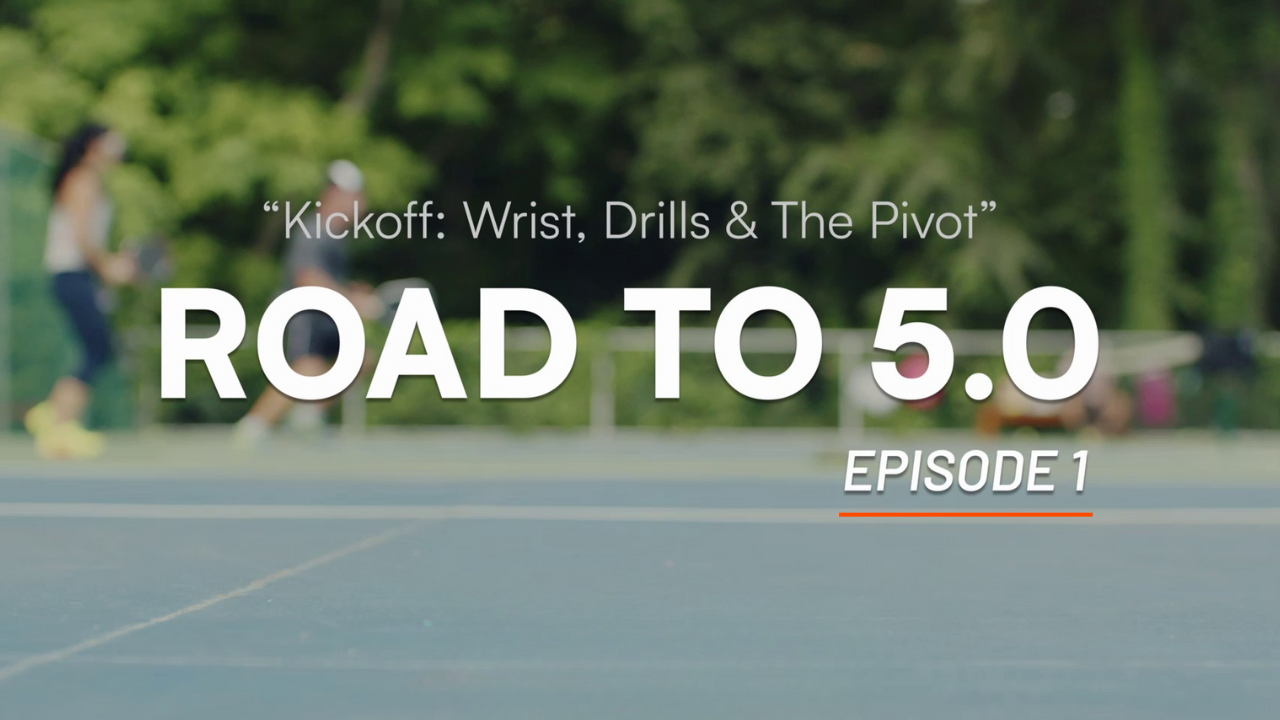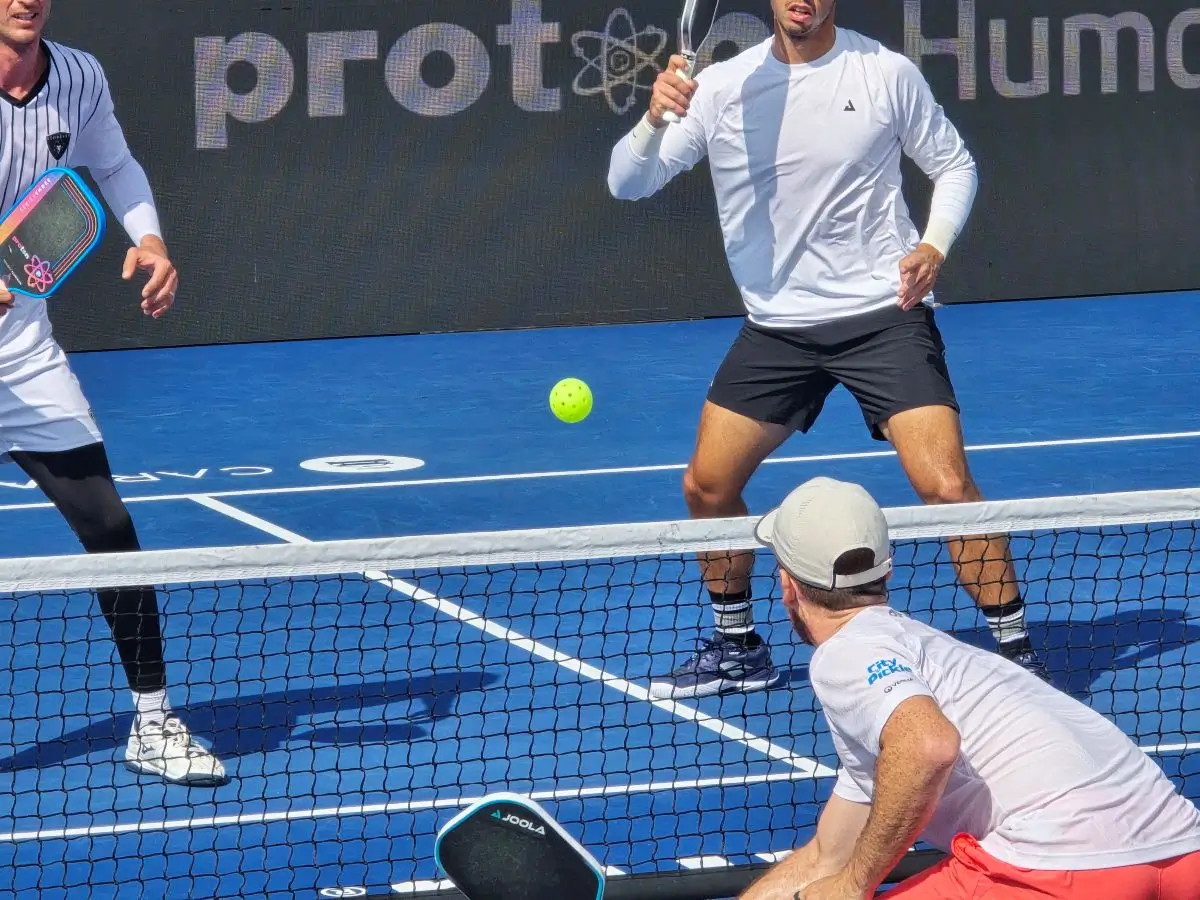Science-Backed Game Plan to Bring Your A-Game to Morning Pickleball Drills
Here's the science behind waking up and performing on the pickleball court in the early morning. Learn how sleep inertia, cortisol levels, body temperature, and nervous system activation impact early morning drills—and get a proven 5-step routine to boost performance.

Ever rolled out of bed and stumbled straight onto the pickleball court, only to feel sluggish, slow, and mentally foggy? You’re not alone. And more importantly, you’re not broken—you’re just human. There’s actual science behind why your brain and body need time to transition from sleep to full performance mode. If you're hitting the court for early morning drills, here's what the research says about how long it takes to truly "wake up" and how to do it right.
Sleep inertia can last up to two hours—jumping into drills too soon can lead to sluggish footwork, mistimed shots, and mounting frustration.
Why You're Groggy in the Morning: The Medical Science Behind Sleep Inertia and Performance Readiness
I learned this the hard way. I used to show up for 6 or 7 AM drill sessions thinking I could just roll out of bed, grab a quick snack, hydrate, and be ready to perform. But I found myself underperforming for the first 30-45 minutes of the session and growing increasingly frustrated. I eventually realized that this approach wasn’t setting me up for success. Before I share my optimal routine for early-morning pickleball, I want to explain what I learned by researching the medical science behind how the mind and body naturally wake up and prepare for performance.
Sleep Inertia: Why You Wake Up Groggy
That sluggish feeling in the morning? It's called sleep inertia. It can last anywhere from 30 minutes to 2 hours. During this phase, your brain is doing two things: 1) it is shaking off the sleep-inducing effects of adenosine (a neurotransmitter that builds up during waking hours to promote sleepiness), and 2) your prefrontal cortex (responsible for decision-making and reaction time) is still warming up. Basically, this is not the moment to test your reflexes.
Cortisol Awakening Response (CAR): Your Natural Alarm Clock
Your body releases a natural boost of cortisol about 30-45minutes after waking. This helps jumpstart alertness and focus. But the peak alertness doesn’t happen the moment you open your eyes—it builds gradually, especially if you're waking up early or in the dark.
Body Temperature & Circulation: The Physical Warm-Up Starts Internally
Your core body temperature is at its lowest when you wake up. It takes around 60-90 minutes for it to rise to an ideal range for coordination, flexibility, and explosive movement. Circulation ramps up as you move, helping to improve motor control and reaction time.
Nervous System Activation: From Rest Mode to Pickleball Mode
Your autonomic nervous system needs to shift from the parasympathetic (rest-and-digest) state to the sympathetic (fight-or-flight)mode. This switch doesn’t happen instantly. If you jump into drills too quickly, your neural signaling might still be half asleep. This is not ideal for several reasons: it increases your injury risk and also heightens the likelihood of moving sluggishly, making late contact with the ball, and having subpar hand-eye coordination—all of which lead to mishits, poor performance, and mounting frustration.
So, How Much Time Do You Need Before Early Morning Pickleball Drills?
To hit the court mentally and physically ready, aim to wake up at least 90 minutes to 2 hours before your first drill.
- Drills at 6 AM? Wake up by 4:30-5:00 AM.
- Drills at 7 AM? Wake up by 5:30 AM.
Research shows it can take up to two hours for your mind and body to reach full performance readiness after waking (Dinges & Powell, 1985)—so wake up, fuel up, and move to dominate the pickleball court.
The Ideal Wake-Up Routine for Pickleball Performance
Try these five easy steps to begin your morning sessions dialed in and ready to go:
Step 1: Get Light Exposure (ASAP)
- Sunlight wakes up your brain by stimulating melanopsin receptors in your eyes
- If it’s still dark, use a bright artificial light or sunrise alarm clock
Step 2: Rehydrate
- Drink 16-20 oz of water with a pinch of sea salt
- This replenishes fluids lost during sleep and kickstarts your metabolism
Step 3: Move Your Body (5-10 min)
- Controlled breathing (box breathing or diaphragmatic breathing)
- Joint mobility (neck rolls, shoulder circles, hip openers)
- Dynamic stretching (lunges, arm swings, spinal twists)
Step 4: Fuel Up (30-60 min pre-drill session)
- Light meal with protein, fats, and a bit of carbs (e.g., eggs with avocado, or smoothie with banana and nut butter)
Step 5: Raise Your Core Temperature (10-15 min pre-drill session)
- Light cardio (jump rope, jogging in place)
- Bodyweight exercises (air squats, mountain climbers)
- Fast feet drills (ladder, cone drills, lateral shuffles)
Wake Up Like a Pro: Your Science-Backed Game Plan for Morning Pickleball
If you want to bring your A-game to early morning drills, don’t just roll out of bed and hope for the best. Give your body and brain time to transition from sleep mode to peak performance. Science says 90 to 120 minutes is your golden window.
Set the alarm, hydrate, move, fuel up, and get your nervous system firing—then go dominate the court.







